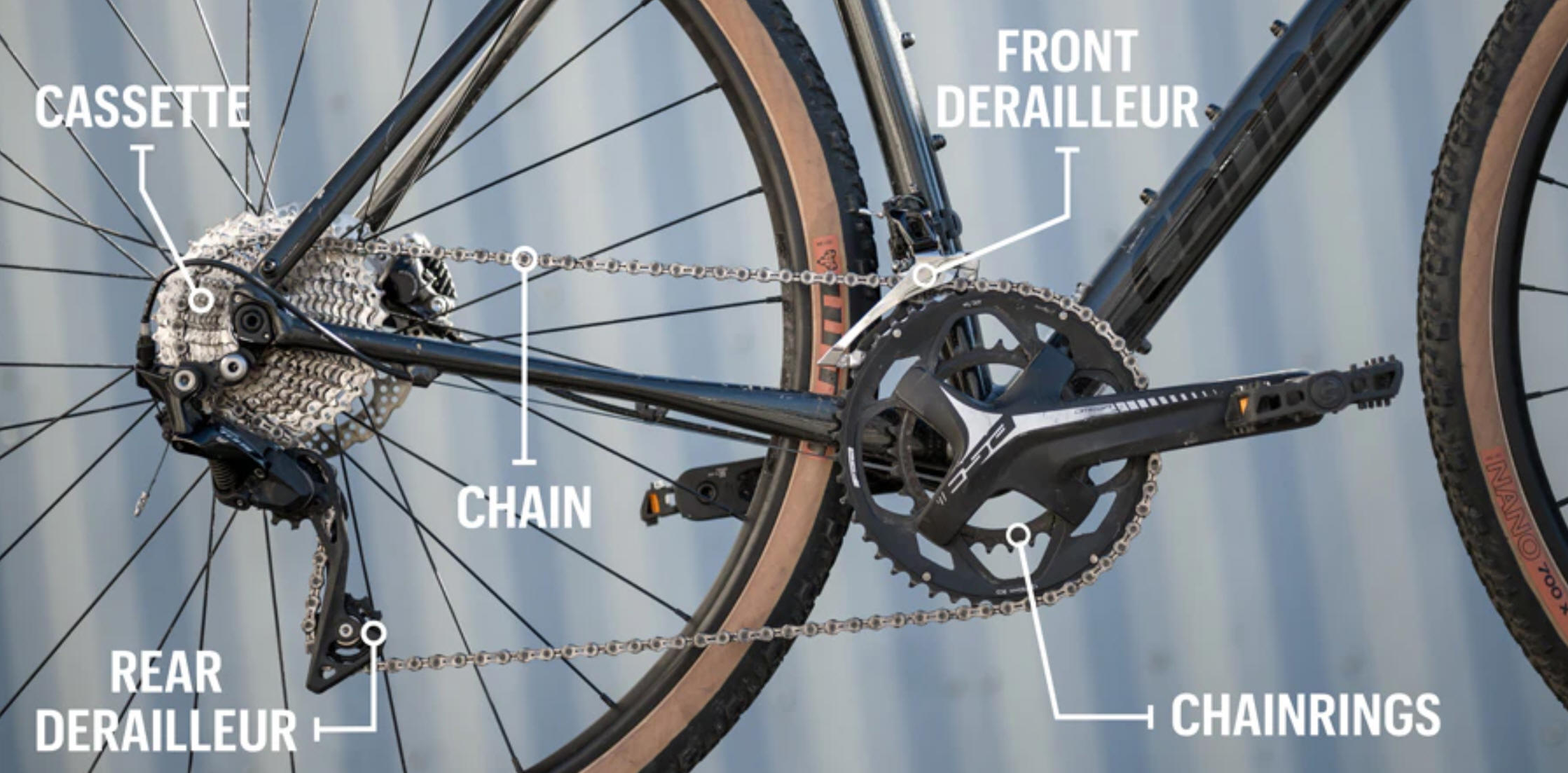 Class
49.5: Friday,
2/9/24
Class
49.5: Friday,
2/9/24Warm Up:
1. What is the point of having a variety of gears on a bicycle? (or a car, motorcycle, etc.)
2. If you ride as fast as possible in one gear, how does your acceleration change over time?
3. How does changing to a higher gear affect F and d (e.g. Fd vs Fd)... where your foot meets the pedal; and where the tire meets the road?
Today:
- Check/review homework
- Test review
- The formulas --

- What do the letters mean?
- What are the units?
- What is the purpose of each formula?
- Be ready to solve for any part
- Definitions: Work, Power, Energy, PE, KE, OE, WNC, Efficiency
- Calculate work done by a variable force.
- Know what information is necessary, and which information isn't (don't be distracted by extra information).
- Know how to apply the key formula (energy changes with work), and how it relates to OE.
- The formulas --
- If you want some extra practice, write the simplest possible equations for the energy video situations PDF. Here are my equations. The thing that makes them the simplest is that quantities that change are assumed to be zero on one side of the equation.
Homework:
- Prepare for test on Monday

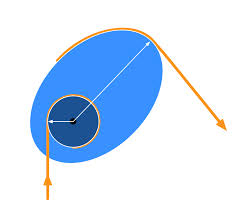 Class
49: Thursday,
2/8/24
Class
49: Thursday,
2/8/24Warm Up:
1. Where does a compound bow store most of its energy?
2. What purpose(s) do the pulleys of a compound bow serve?
3. Based on this simplified
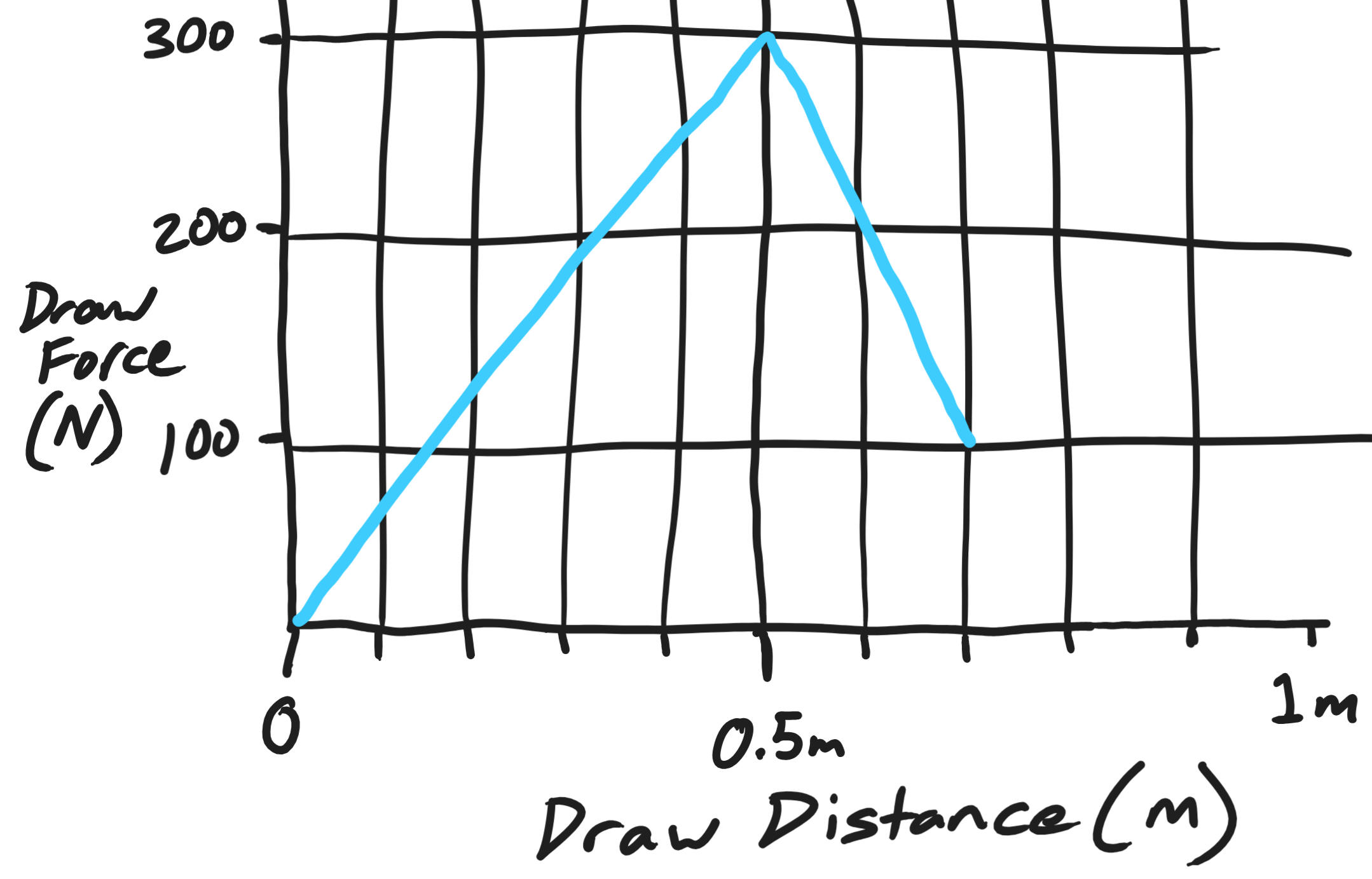 graph
of draw force vs distance, how much work is done in fully drawing the
bow?
graph
of draw force vs distance, how much work is done in fully drawing the
bow?
Today:
- Contest winners get free homework passes. Contest results
- "4 minute drill"
- Do some problems based on the videos PDF
- Write equations based on the video (key)
- Test on Monday -- review tomorrow
Homework:
- p. 20, #13-19 (Energy conservation drill)
Solutions
-- but #18 is wrong Correct solution to
#18:

- Solutions to problems based on the videos
Warm Up:
None
Today:
- Identify energy videos for fruit snacks and homework grades.
- Videos sorted by letter
- Contest results
Homework:
- None
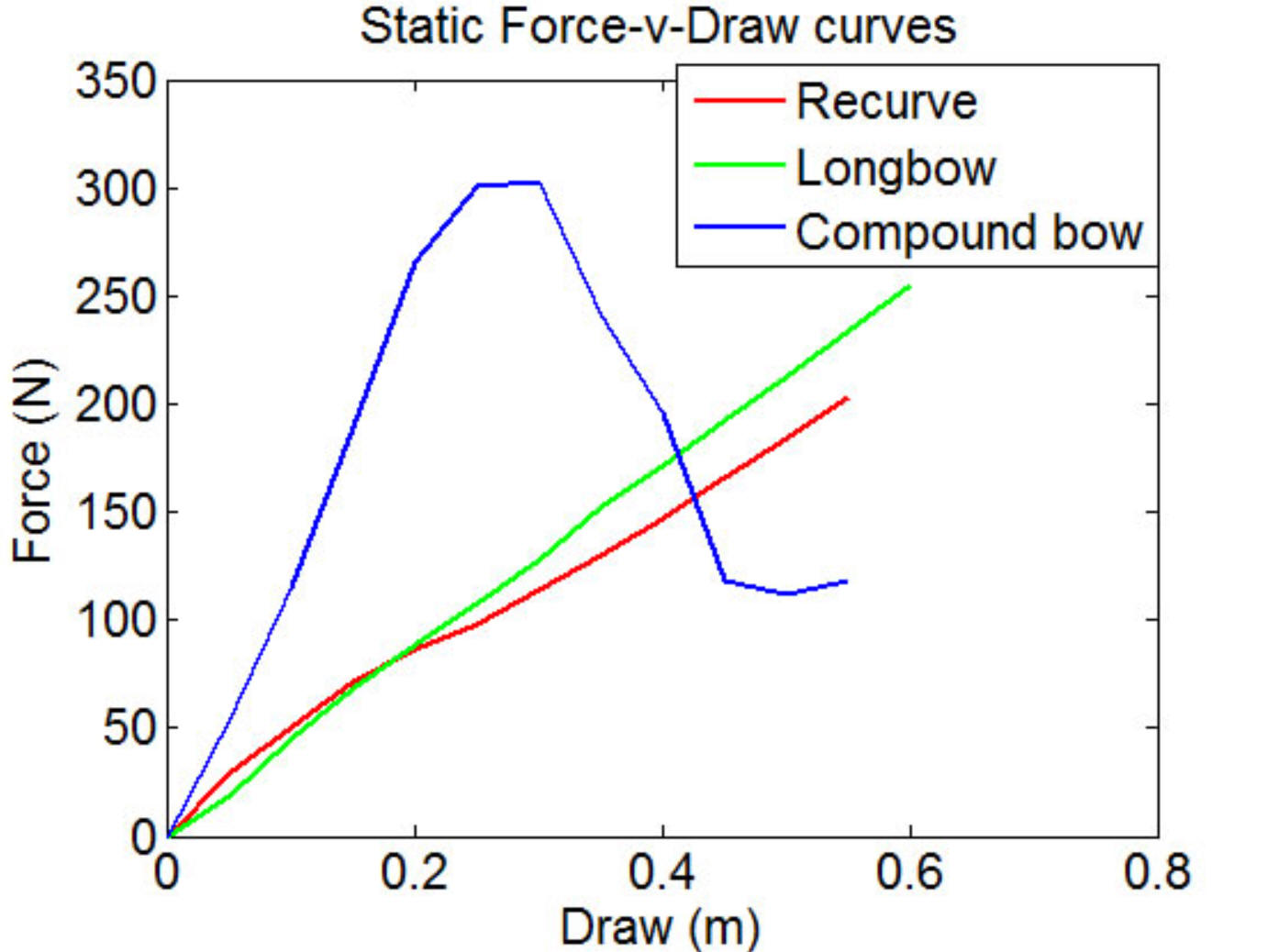 Class
48: Tuesday,
2/6/24
Class
48: Tuesday,
2/6/24Warm Up:
Assuming that all three bows are drawn to a distance of 0.5m...
1. Which bow stores the most energy when it is drawn to this distance?
2. Estimate the energy stored in each bow.
3. Why is the compound bow curve so different?
Today:
- Check/review homework
- Energy Conservation (or not) Videos PDF
- Video Submission Form
- Example video -- can we identify it?
Homework:
- None
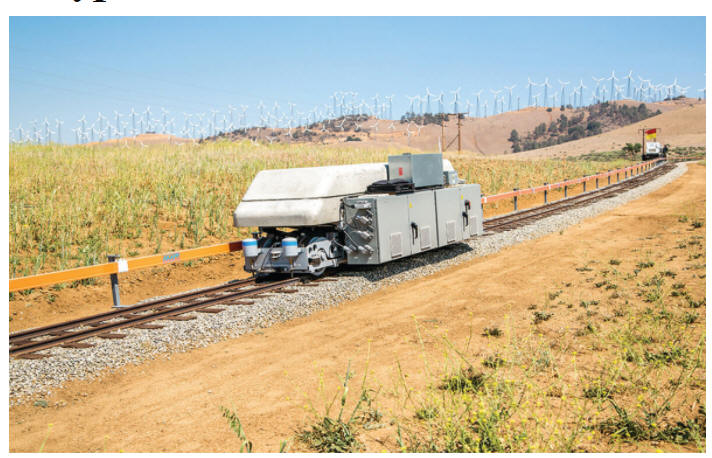 Class
47.5: Monday,
2/5/24
Class
47.5: Monday,
2/5/24Warm Up:
1. Can you guess what the "sisyphus train" does?
Today:
- Check/review homework
- Work time
Homework:
- p.13 1-5 solutions Video explanations
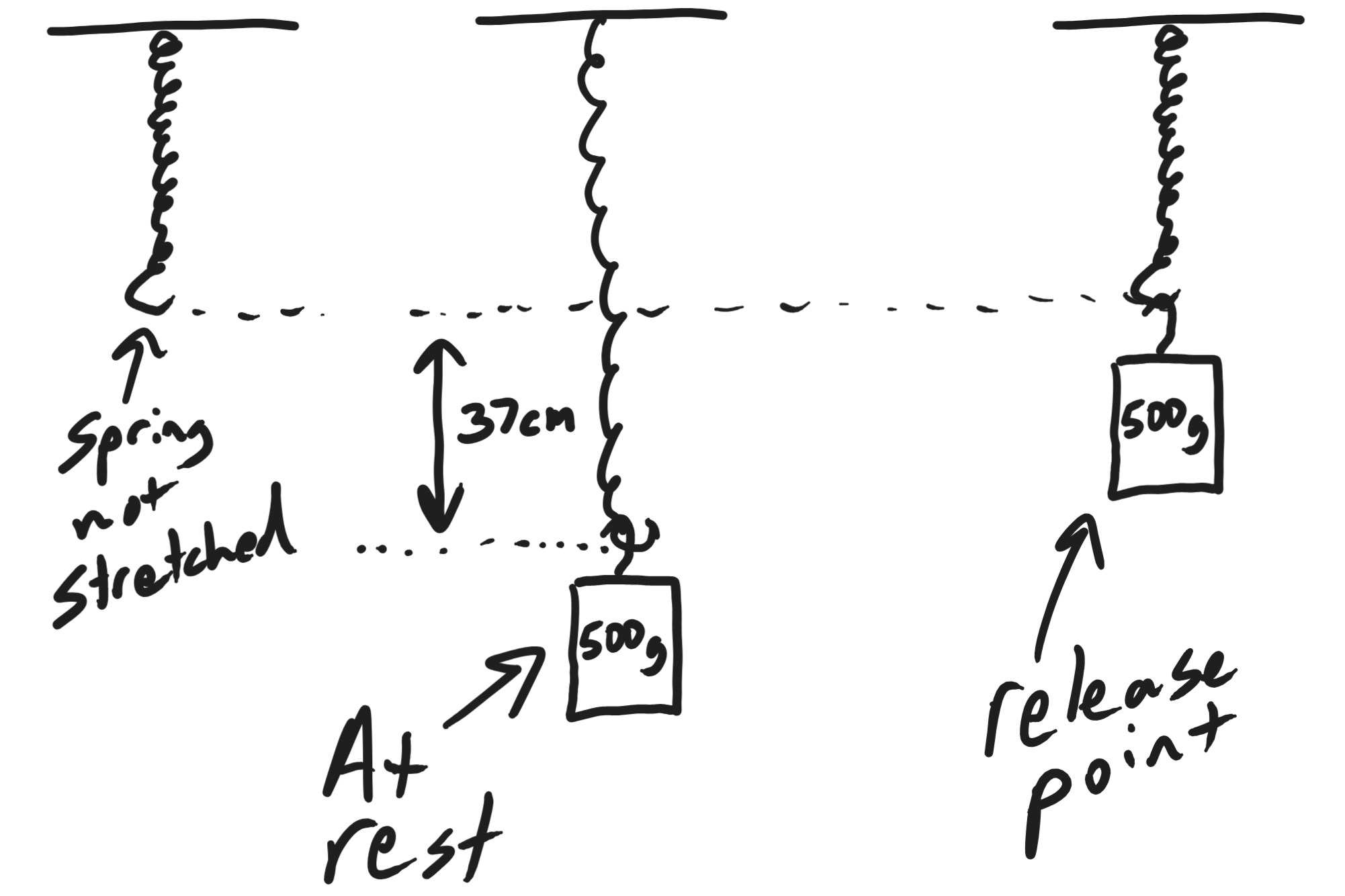 Class
47: Friday,
2/2/24
Class
47: Friday,
2/2/24Warm Up: Sketch a line graph showing the changes in energy from the point when the mass is released until bobs back up to its highest point. Include PEgrav, PEspring, KE, and OE.
Today:
- Check/review homework
- Go over the lab answers. If you turned in your lab on time, I pasted my calculations (based on your data) into a black-outlined box in your spreadsheet. If your speeds were wrong, I used your wrong speeds for my calculations. Here's a video explaining my calulations.
- Electrical energy units won't be on this test, but they're on Mr. P's old test, so let's go over them (handout p.11)
Homework:
- Mr. Pennington's 2015-2016 Test -- p. 15-19 of the Unit 6 Handout (PDF). Solutions
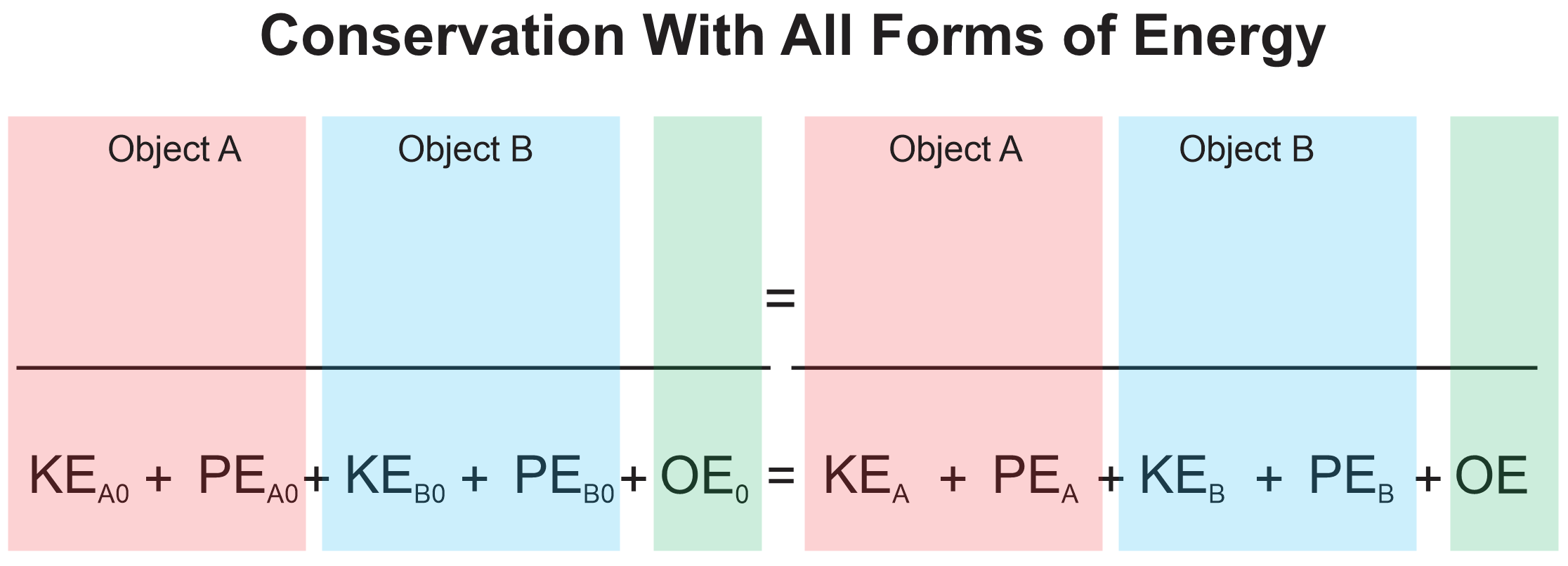 Class
46.5: Thursday,
2/1/24
Class
46.5: Thursday,
2/1/24Warm Up: Consider the event you examined in the pulley lab -- which begins as heavier block A starts to fall, causing a lighter block B to rise -- and which ends just before block A hits the "ground."
Populate graph on the right with bars showing the distribution of energy at the beginning and the end of this event.
Today:
- Check/review homework
- A7/8 -- a bit more work time on lab
- Turn in your lab, if you haven't already -- we will go over it tomorrow
- Springs Notes -- p. 11. Unit 6 Handout (PDF) Notes key
Homework:
- Bungee Drop Problem (not in the handout): A
0.5kg mass is attached to the lower end of a spring that is hanging
from the ceiling. The mass is held motionless and then
released from the point at which the spring is just about to begin
to stretch. The mass drops to some low point, bounces back up,
and continues to bounce for a long time. After the mass
finally comes to rest, the spring is stretched a distance of 0.37m.
- Find the spring constant (k) of the spring.
- Calculate the potential energy stored in the spring after the mass is finished bouncing.
- Calculate the distance between the release point (zero stretch) and the lowest point reached by the end of the spring during this scenario.
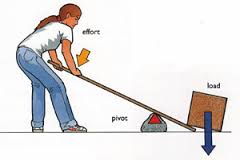
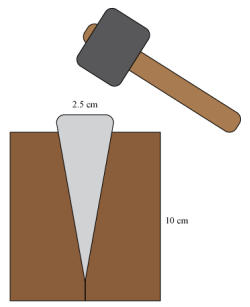

Warm Up:
The pictures on the right all show simple machines. Simple machines allow the same work to be done with more convenient combinations of force and distance.
1. For each picture, identify the machine (s).
 2. For each machine, tell how the machine alters
the distance over which force must be applied by the human using the
machine.
2. For each machine, tell how the machine alters
the distance over which force must be applied by the human using the
machine.
3. How does the machine alter the force that the human must apply?
4. Which "machine" is fundamentally different? Why? If you don't have a quick answer to this, move on to the other questions and come back to this one.
Today:
- Check/review homework
- Finish Lab -- Turn-in via Google Classroom.
Homework:
- Practice Quiz -- problem #1 only -- p. 9 Solutions Video for problem 1
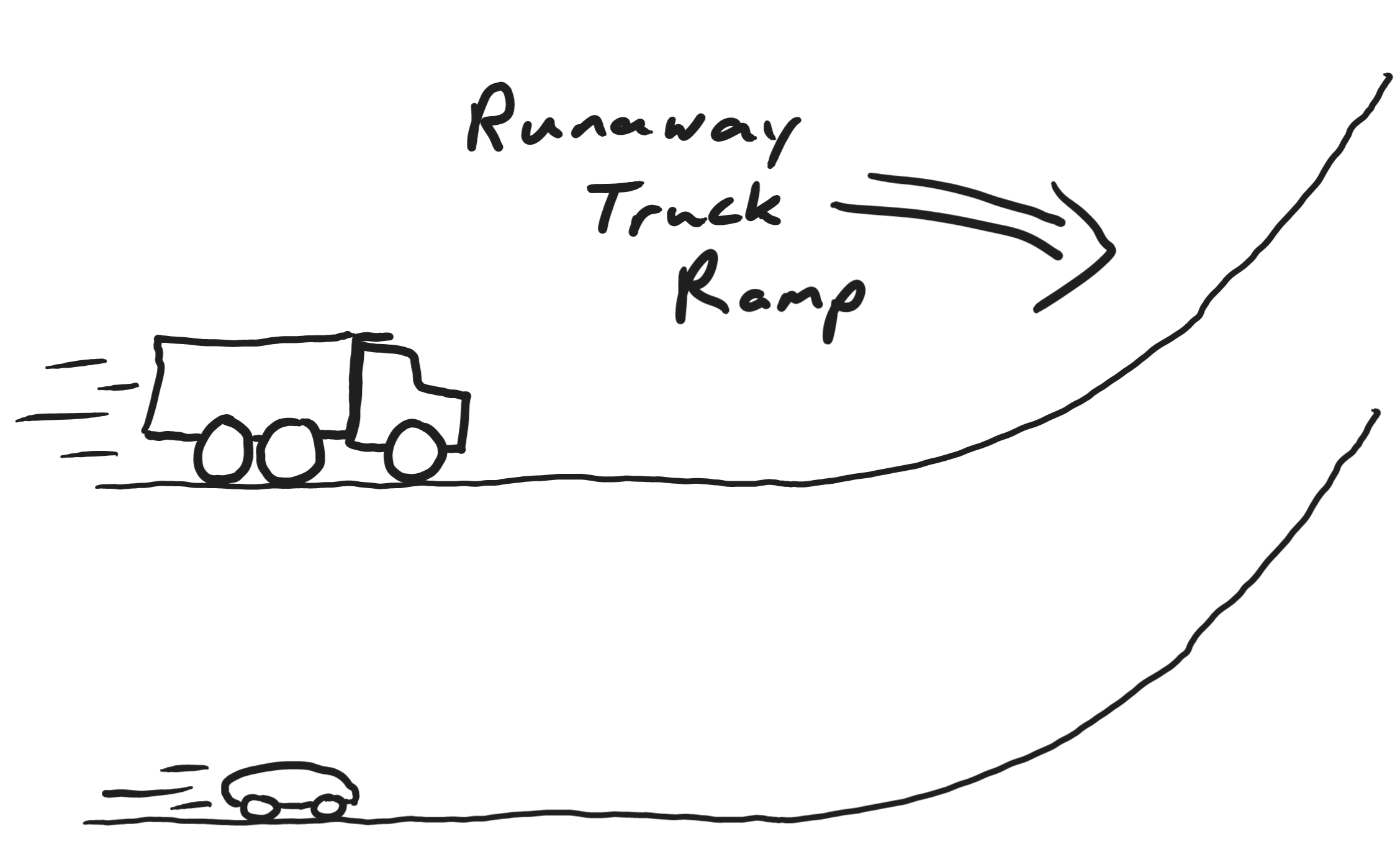 Class
45: Monday,
1/29/24
Class
45: Monday,
1/29/24Warm Up:
A compact car (1,500kg) and a fully-loaded dump truck (36,000kg) are traveling at the same speed on level ground...
1. Compare the distances that they will slide if they both lock up their wheels and skid to a stop. Assume that their coefficients of friction are equal.
2. Compare the distances that they will travel up a "runaway truck ramp" before coming to a stop.
Today:
- Check/review homework
- Previous warmup
- Notes -- efficiency and other energy units, p. 7 and 12 of the Unit 6 Handout (PDF)
- Lab -- Atwood Machine Energy Analysis. In groups of up to 3, fill in all of the cells on the spreadsheet. Turn-in via Google Classroom.
Homework:
- Complete #1-5 on p. 7-8.
-
Answers: 3a.17.8N 3b. 535J 3c.17.7m/s 4. 0.67hp 5a. 604,747J 5b. 201,582W 5c. 270hp 5d. 43.8 5f. 65.7m
 Class
44.5: Friday,
1/26/24
Class
44.5: Friday,
1/26/24Warm Up: In this video, a driver supposedly enters a loop-the-loop at a speed of 36mph (16.1m/s). The driver supposedly experiences 6g at the bottom and approximately 0g at the top.
1. They say the loop is 40feet high. Based on that height, what is the approximate centripetal acceleration at 16.1m/s?
2. Assuming that no non-conservative work is done once the car enters the loop, do these numbers really work? If not, what numbers would?
Today:
- Check/reveiw homework
- Go over the Power formula on p. 5 and do the first practice problem on p. 6. Unit 6 Handout (PDF)
Homework:
- Finish the practice problems on p. 6-7. Ignore the headings; the problems are mixed up. Answers p. 6-7
- Optional extra credit. Solve part 1 of the warm-up. Show all of your work.
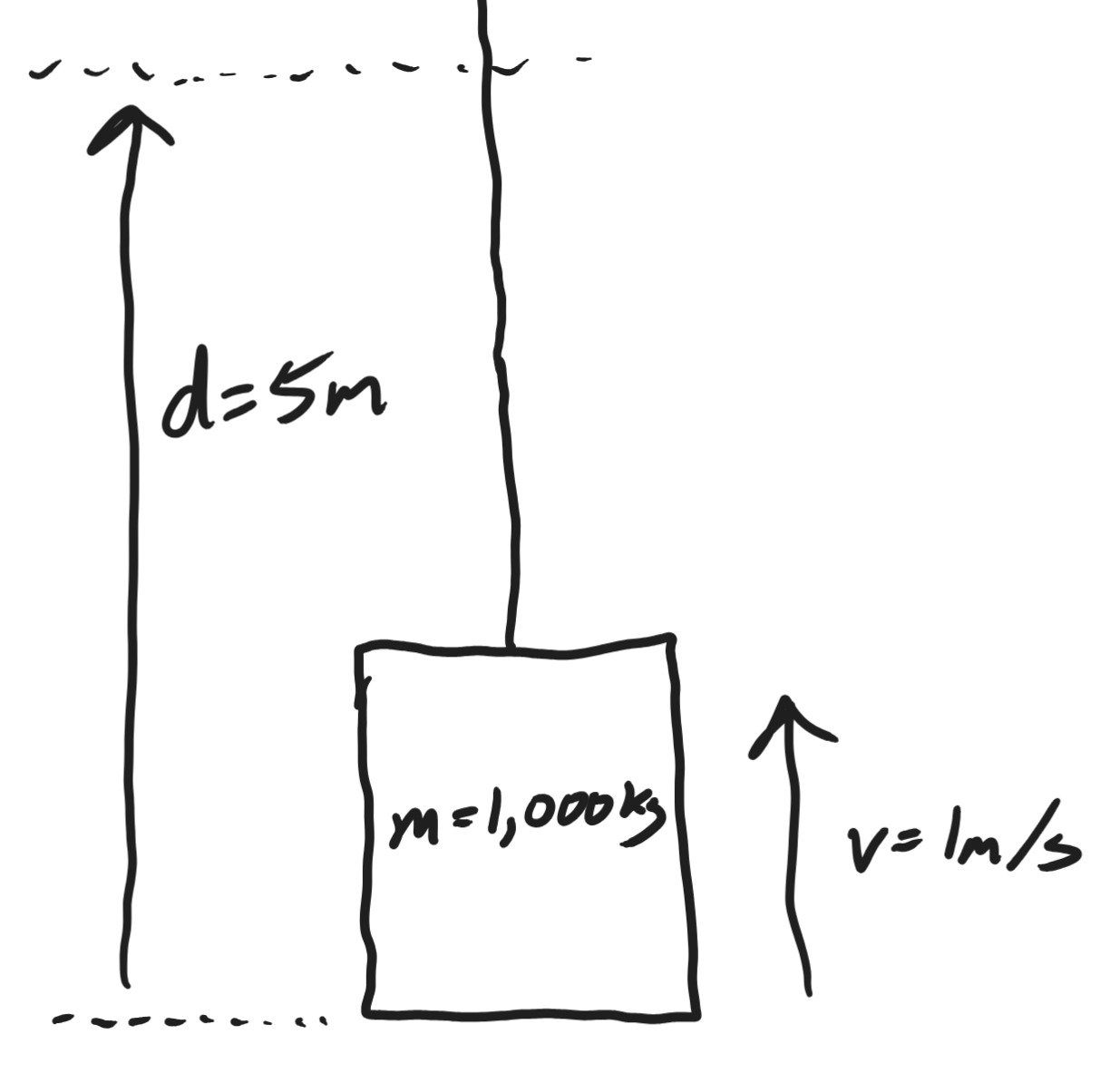 Class
44: Thursday,
1/25/24
Class
44: Thursday,
1/25/24Warm Up: A 1,000kg elevator travels upward a distance of 5m at a constant speed of 1m/s.
1. What happens to the elevator's PE and KE during this trip?
2. Use the formula PE0 + KE0 +WNC = PE + KE to write an expression for the non-conservative work done on the elevator.
3. What is the net force acting on the elevator? Use that net force to calculate the work done on the elevator.
4. There should be a conflict between your answers to #2 and #3. What is the conflict? How can we resolve it?
Today:
- Start Unit 6 -- Work and Energy
- Unit 6 Handout (PDF)
- Continue notes
- Start the homework -- work on #6
Homework:
- P.8, #6 Answers
Warm Up: Skip it. Jump right to the notes.
Today:
- Start Unit 6 -- Work and Energy
- Unit 6 Handout (PDF)
- Begin notes today
- Video of Notes from B2 (we didn't get quite as far as in B1)
- Filled in notes -- up to p. 5.
Homework:
- None
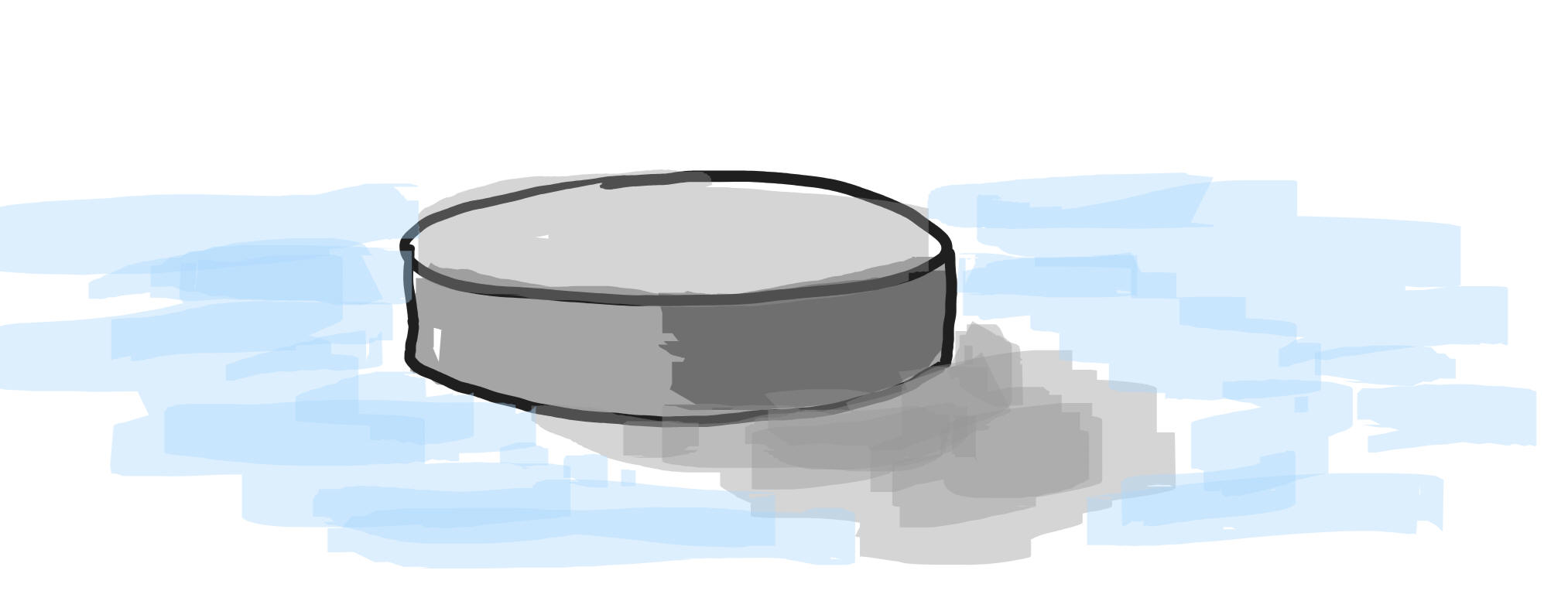 Class
43: Tuesday,
1/23/24
Class
43: Tuesday,
1/23/24Warm Up: Energy of the puck. The puck sits on the ice...
1. Which of these would change the puck's energy: a) someone picks up the puck and holds it at a height of 1m; b) someone kicks the puck sideways, causing it to slide away c) someone stands on the puck.
2. What is energy?
3. Consider the person lifting the puck one meter and write an equation. On one side of the equation, place the energy that the puck had before the action. On the other side of the equation, place the energy that the puck had after the action. Now find a way to balance the equation in a manner that makes sense. Clearly, you're going to have to add a missing piece to make this work.
4. Think about the missing piece you added to make the equation balance. What are some ways that it could be varied without changing the starting and ending energy totals?
5. Repeat steps 3 and 4 for the kicking of the puck (beginning before the kick and ending just after the puck leaves the foot).
6. How can we wrap all of this into a tidy equation that sums up the most important aspects of this next unit?
Today:
- Look at midterms
- Does anyone else want to have the gravity & circles test dropped
or moved to Q3?
- Optional gravity/circles retake next Monday.
- Course Recommendations
- Start Unit 6 -- Work and Energy
Homework:
- None
Warm Up: A 100kg human stands at rest on a 25 degree slope. The coefficient of friction between the human's shoes and the slope is 0.2. The human suddenly runs downhill as fast as possible for 4m and then "slams on the brakes," sliding to a stop.
1. How long does it take them to travel 4m?
2. How far do they slide after hitting the brakes?
3. Graph their motion for this event (consider downhill to be positive and uphill to be negative.
Today:
- Optional test retakes.
- Midterm review. What do you want to work on?
- A couple of extra projectile problems, with solutions PDF
Homework:
- Prepare for the midterm
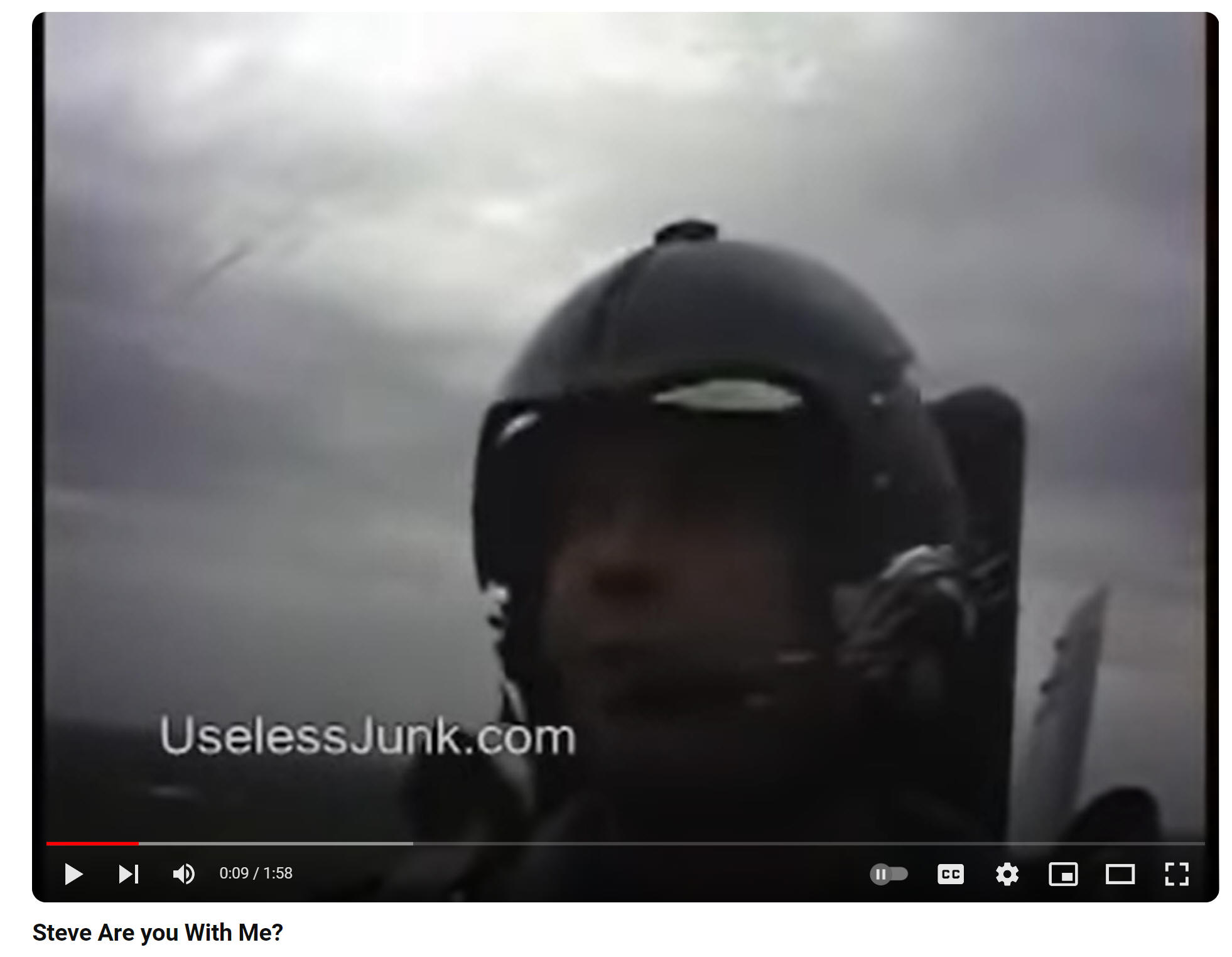 Class
41.5: Thursday,
1/11/24
Class
41.5: Thursday,
1/11/24Warm Up:
1. What's happening to this guy? Why? How does it work?
2. In a moment I'm going to stand still; walk to the right at a constant speed; stop; and then walk to the left at a constant speed. Sketch graphs of my displacement, velocity, and acceleration.
Today:
- Test Retake Updates --
- on the gravity/circles test, you can choose exactly which problems you wish to redo -- BUT I need your original test back, because I didn't record your scores for every problem.
- And yet another choice. You can still choose retake it this semester or next, but you can also drop it altogether.
- You can take the midterm during B12 (1st exam) if you want
- Exam Updates
- You won't have to create graphs with numbers (like the practice we've done so far), but you will have to draw graphs.
- No multiple choice
- If you want "clean copy" practice problems, here are links to
blank versions of the unit handouts. They all have practice
tests. The PDF versions are probably easiest to print from
- Unit 1 -- Kinematics in 1-D: Unit 1 Packet (PDF) Answer Key for entire handout
- Unit 2 --2-D Kinematics: river problems, projectile motion Unit 2 Packet (PDF) Unit 2 Answer Key
- Unit 3 --Newton's
Laws in 1D: forces problems, friction, etc. multibody problems
Unit 3 Handout (PDF)
-
Practice test on p. 21-24 Solutions/answers
-
Practice test on p. 21-24 Video explaining solutions/answers
-
- Unit 4 --Newton's
Laws in 2D: problems on inclines, etc.
Unit 4 Handout (Forces in 2D)
PDF
- Solutions to practice test on p. 11-12
-
Unit 5 -- Circular Motion and Gravity Practice Test PDF Answers
Homework:
- Prepare for the midterm
- Optional -- prepare to retake some gravity/circles test problems tomorrow
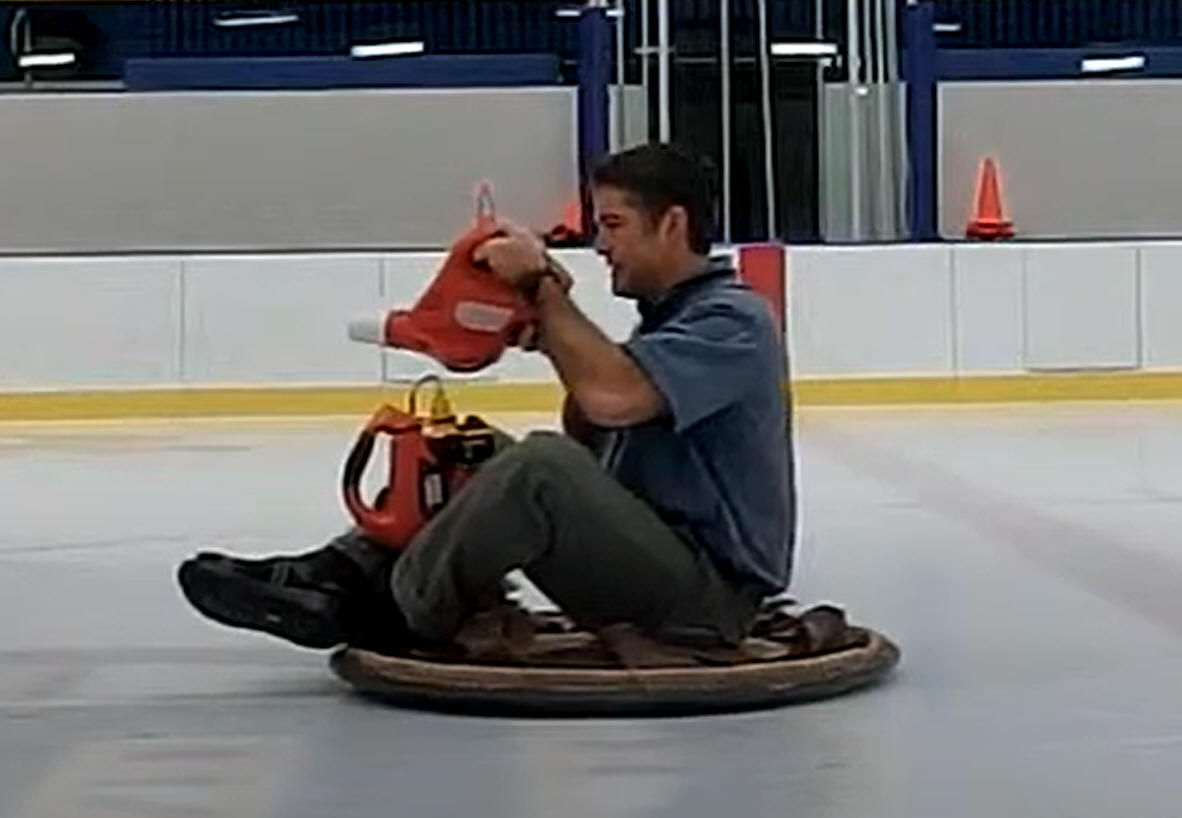 Class
41: Wednesday,
1/10/24
Class
41: Wednesday,
1/10/24Warm Up: Someone is using a leaf blower to propel a hovercraft on a hockey rink. Assuming that this an essentially frictionless evironment, what can they do in order to travel in a uniform circle? How does that work?
Today:
- If you like your grade on the circles and gravity test, it can go on this quarter. If you want to retake it, we will do that next quarter. This way we can focus on midterm review.
- B1/2 midterm?
- Check/review homework
- Get a copy of the "What's on the Exam?" document PDF. You can also use your notes and old tests. The exam is fairly comprehensive.
Homework:
- Prepare for the midterm and generate questions if you have them.
- Email me if you want particular types of problems for practice
Warm Up:
1. Is uniform circular motion a cause, an effect, or both?
2. If it's a cause, what is its effect? If it's an effect, what is its cause?
Today:
- Return tests
- Check/review homework
- Finish phase 3 of Midterm Practice Problem #1, PDF
Homework:
- Phase 3 of Midterm Practice Problem #1, PDF
- Last year's midterm multiple choice questions.
Warm Up: None
Today:
- Test
- Midterm Review
Homework:
- Midterm Practice Problem #1, PDF phases 1 and 2 only.
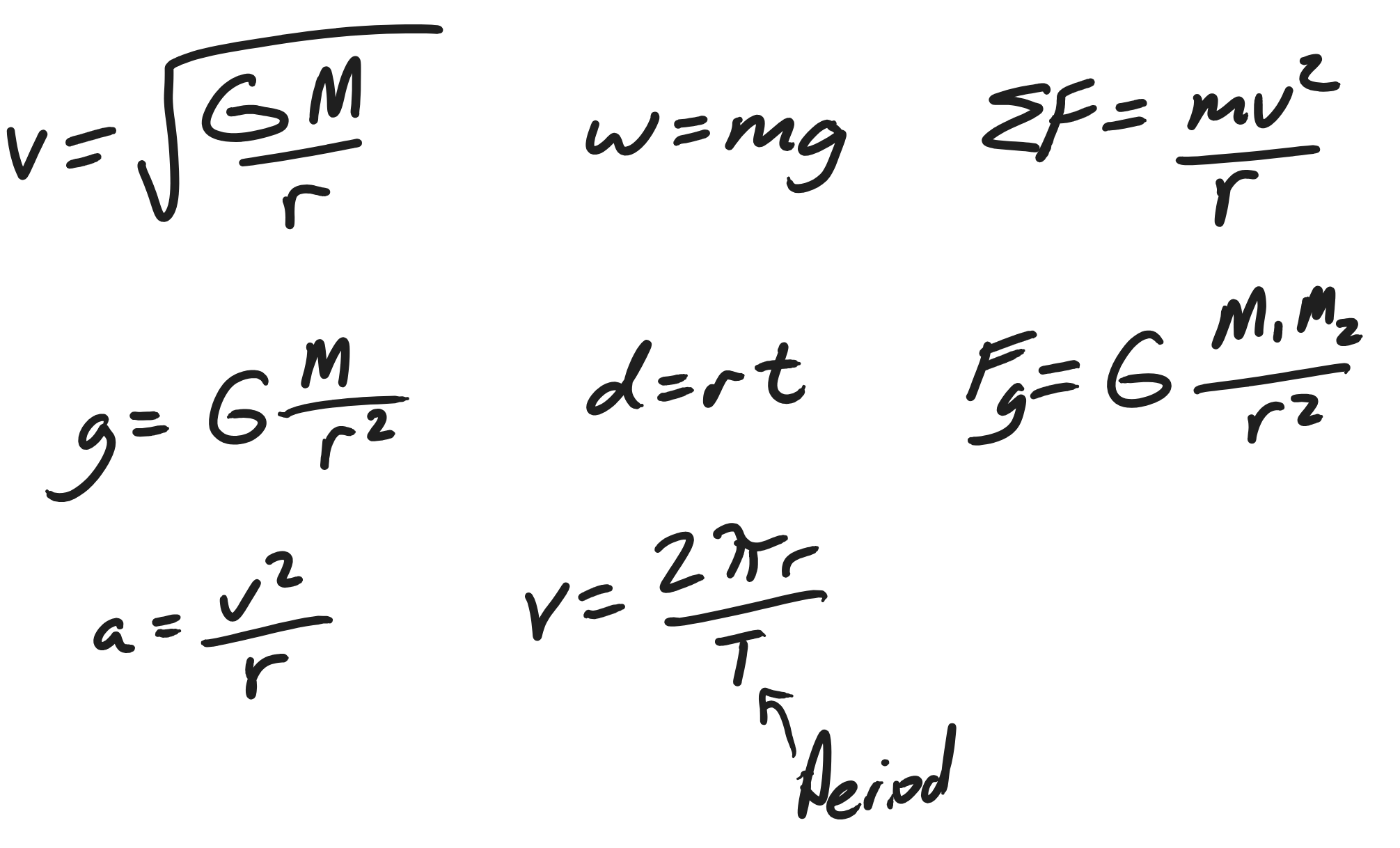 Class
39.5: Friday,
1/5/24
Class
39.5: Friday,
1/5/24Warm Up:
1. Which formulas will be provided on the test?
2. Which formulas can be easily derived?
3. For each formula...
a) to what situation does it apply?
b) to what does each letter apply?
Today:
- Test review -- drill and practice
Homework:
- Prepare for Monday test
 Class
39: Thursday,
1/4/24
Class
39: Thursday,
1/4/24Warm Up: Theoretically, any object in the Universe can be made to move in uniform circular motion. Choose one of the random objects from the picture and describe what would you need to do in order to make that object move in uniform circular motion.
Today:
-
Practice Test
PDF
Answers
- Renumber it.
- Note: On this practice test, there are 3 "non-planetary problems" and 4 "planetary problems." Each problem represents a basic type of problem from this unit. On tomorrow's test, there will be one fewer of each type of problem. There will probably be one question about the relationship between Normal force and the perception of weight.
- Complete 1-6.
- Go over the answers.
- Exam review -- will start in earnest on Monday. For now, if you want to do some reviewing, just review your notes and past tests. Or you can scroll down this page to review the year.
Homework:
- Due on Monday -- Answer questions 7 and 8 (formerly #1 and #2, before we renumbered it) of the practice test. Practice Test PDF Answers
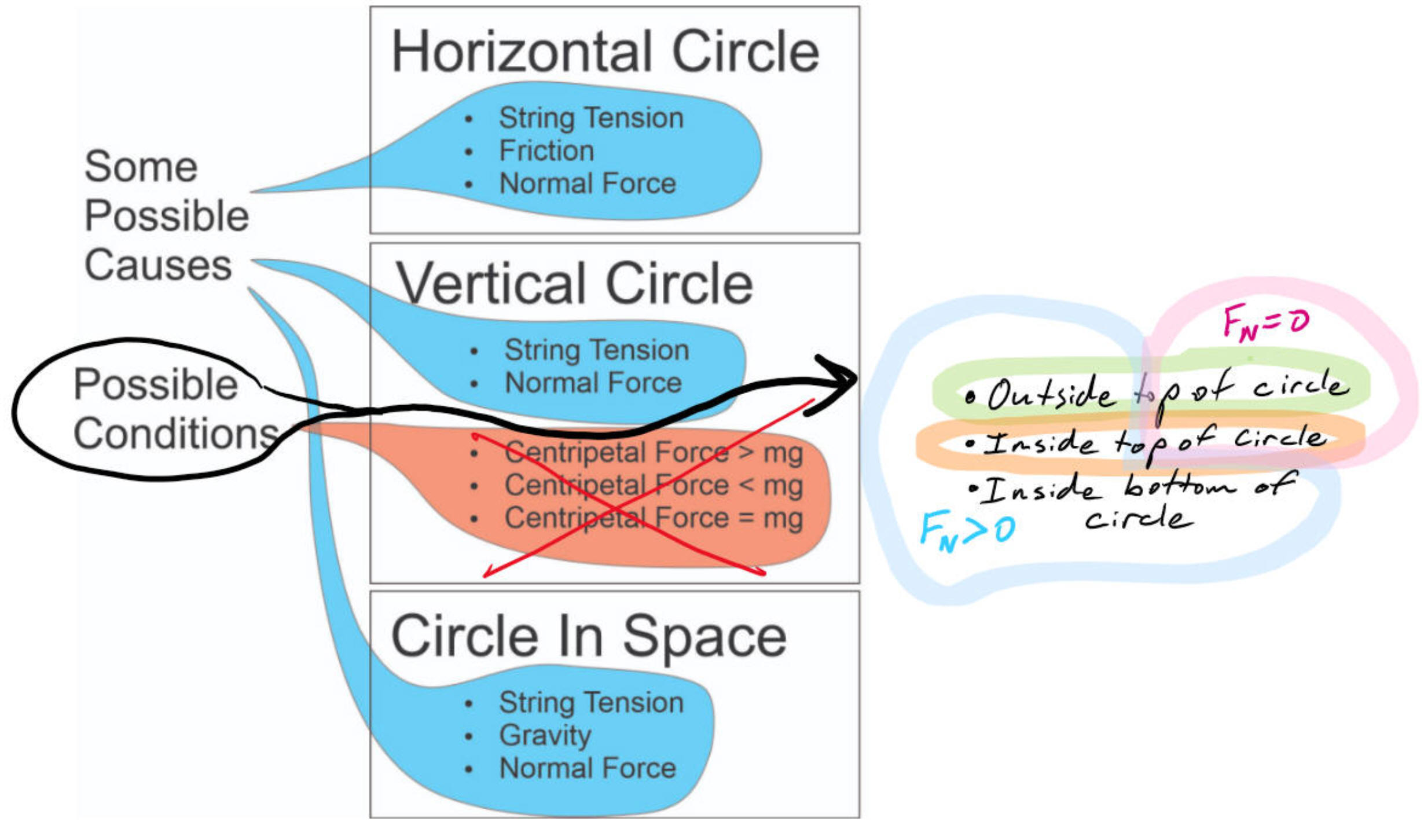 Class
38.5: Wednesday,
1/3/24
Class
38.5: Wednesday,
1/3/24Warm Up: The graphic on the right is an attempt to illustrate the scope of circular motion problems that might appear on Friday's test. Envision a problem scenario for each cause and condition.
Today:
- Return retakes
- Check/review homework
- Tomorrow -- Circular Motion and Midterm review
Homework:
- none
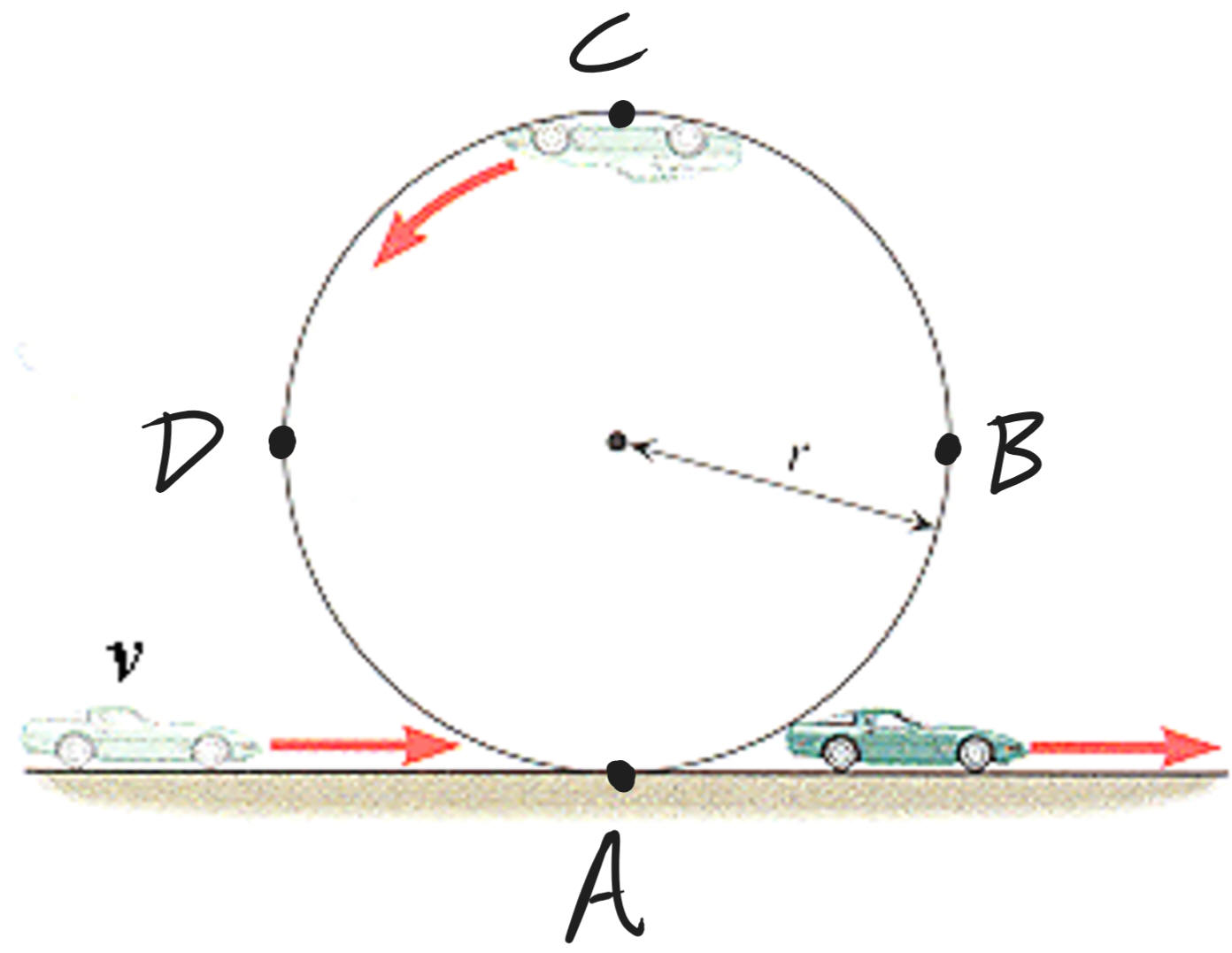 Class
38: Tuesday,
1/2/24
Class
38: Tuesday,
1/2/24Warm Up: The car is driven at a constant speed through the loop-the-loop.
1. Sketch a force diagram for each letter in the diagram. Identify each force.
2. Write an expression for normal force at each letter.
Today:
- Look at the exam schedule -- exam details will be coming soon. Check/review the homework
- As a review, let's derive some formulas:
- Fn: experienced by an object on the top (outside) of a vertical circle [we already did the inside, with the warm-up].
- v: velocity of a satellite, based on orbited planet mass and orbital radius
- g: based on orbited planet mass and orbital radius
- v: velocity of a satellite, based on its orbital period (T)
- T: an equation relating orbital period of a satellite, orbited planet mass, and orbital radius
- Work on Practice Test #2 -- but cross off problem number 5.
- Short test (1/2 block) on Friday over circular motion and gravity. Retake next Friday.
Homework:
- Finish practice test #2 (but not problem #5). Answers/Solutions
 Class
37.5: Friday,
12/22/23
Class
37.5: Friday,
12/22/23Warm Up: Some cultures celebrate a character called Santa Claus, who delivers presents around the world in a sleigh. This event occurs over a time interval known as Christmas Eve. Starting from rest, if Santa were to deliver a present to every child who believes in him, how fast would Santa need to accelerate between stops in order to deliver all of the presents on Christmas Eve? Santa Claus from an Engineer's Perspective
Today:
- Non-denominational fireplace with snappy logs
- B1: Learn to secure a load with a bowline and a Trucker's
Hitch (slippery half hitch + slip knot), and explain how this
arrangement allows you to tie a load with high tension.
- Video showing what to do and how to explain the mechanical advantage
- Bowline:
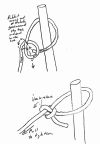 Slippery Half Hitch:
Slippery Half Hitch:
 Slip knot:
Slip knot:
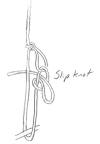 How to secure a box with a Trucker's Hitch:
How to secure a box with a Trucker's Hitch:

Homework:
- Due on the Monday after break -- Handout p. 5-7 "Practice Test #1" Answers/Solutions Video Explanations Since we're not doing Kepler's laws, here's a new solution to problem number 5 (p.6)
Warm Up:
NoneToday:
- Quiet Work Time
Homework:
- Test retake(s) today
- Due on the Monday after break -- Handout p. 5-7 "Practice Test #1" Answers/Solutions Video Explanations Since we're not doing Kepler's laws, here's a new solution to problem number 5 (p.6)
Warm Up:
NoneToday:
- Quiet Work Time
Homework:
- Test retake(s) today and tomorrow
- Due on the Monday after break -- Handout p. 5-7 "Practice Test #1" Answers/Solutions Video Explanations Since we're not doing Kepler's laws, here's a new solution to problem number 5 (p.6)
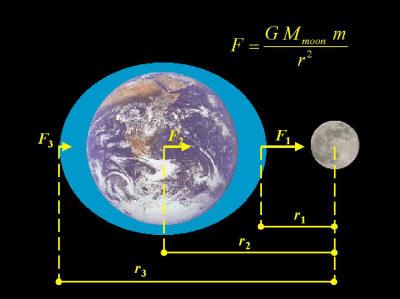 Class
36: Tuesday,
12/19/23
Class
36: Tuesday,
12/19/23Warm Up:
1. Why do we have tides?
2.
Why is there a high tide on the opposite side of the Earth from
the Moon?
3. Which object is excerting a greater gravitational force on you right now, the Moon or the Sun?
4. How is this related to black holes?
Today:
- Check/review homework
- Get the rest of the Unit 5 Handout PDF -- do pages 3-4 together. Filled-in Notes Be very, very, careful.
- What to do on Friday? Special warm-up; then knots or songs?
Homework:
- Test retake(s) tomorrow and Thursday
- Due on the Monday after break -- Handout p. 5-7 "Practice Test #1" Answers/Solutions Video Explanations Since we're not doing Kepler's laws, here's a new solution to problem number 5 (p.6)
 Class
35.5: Monday,
12/18/23
Class
35.5: Monday,
12/18/23Warm Up:
1. What's the formula for the net force acting on the jogger in the video?
2. Approximately how fast is the jogger in this video moving?
3. If the jogger turned around and jogged the other way, would he feel any different?
4. What must move in order for the person to experience simulated gravity... the space station, the person, neither, or both? What does "move" mean in outer space?
Today:
- Return tests
- Questions about the test?
- Start the new Unit? -- Uniform Circular Motion and Law of Gravitation
- Finish the practice problems on Unit 5 Handout PDF. Filled-in Sheet To make problem #4 easier, assume that the mass of the car ois 1,000kg.
Homework:
- Complete the practice problems on p. 2 of the handout. Solutions
Warm Up: None
Today:
- Little test -- Newton's Laws in 2D.
Homework:
- None
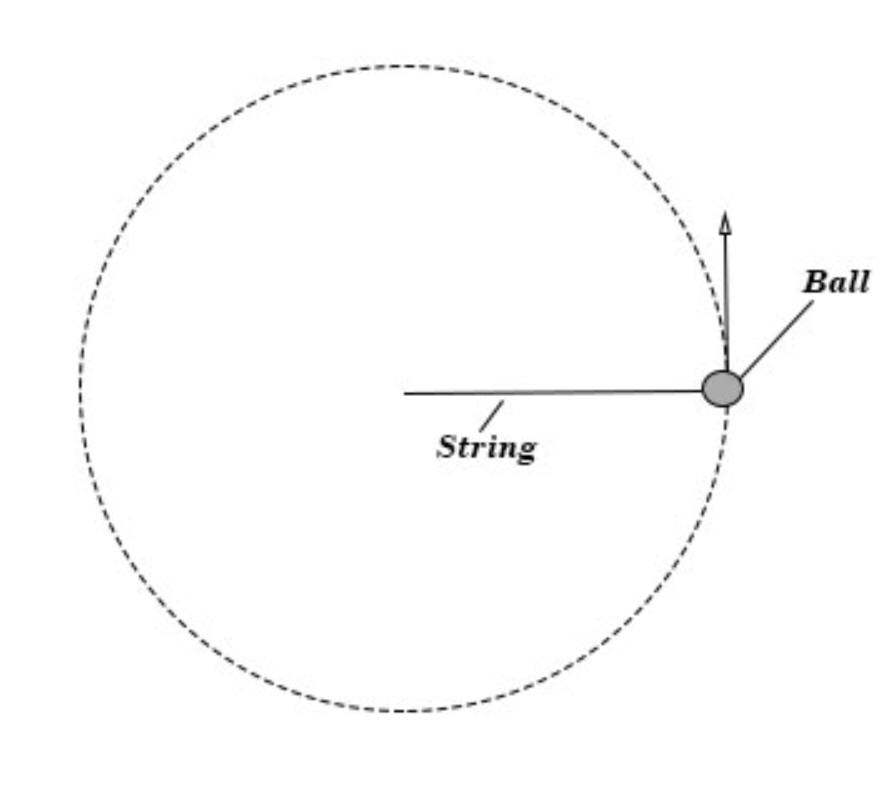 Class
34.5: Thursday,
12/14/23
Class
34.5: Thursday,
12/14/23Warm Up:
The ball is moving at a constant speed in a circular path.
1. What is the direction of its acceleration?
2. How do we know this?
Today:
- Check/review homework
- Questions about the test?
- Start the new Unit -- Circular Motion and Gravity Unit 5 Handout PDF
Homework:
- Prepare for tomorrow's small test.
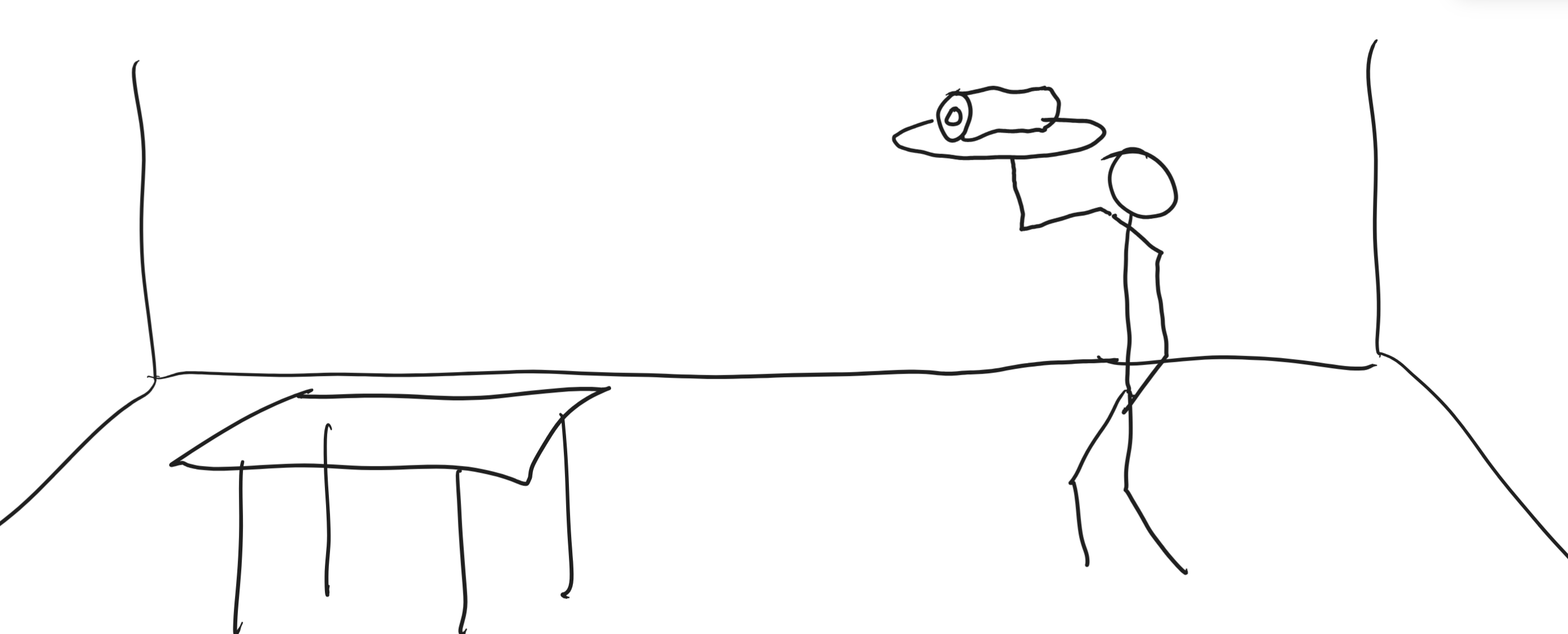 Class
34: Wednesday,
12/13/23
Class
34: Wednesday,
12/13/23Warm Up:
A waiter at Bramble is
delivering a chunk of bone (marrow in the middle), basted in synovial
fluid, to some dinner guests. Touching only the perfectly
smooth and flat serving tray (also made of bone), the waiter must
deliver the essentially frictionless dinner bone to the guests,
placing it carefully so that it sits at rest on their table.
1.
Assuming that the bone and tray in the picture
start at rest, describe what the waiter would need to do in order to make
this happen?
2. Using
the head-to-tail method, sketch the forces acting on the bone at various
times during the waiter's feat.
[Let's just assume that
the bone is frictionless.]
Today:
- Check/review homework
- Work on practice Test #2 -- p. 11-12 of the handout. On #2 and #4, change the coefficients of friction to 0.1 and 0.2, respectively.
Homework:
- Finish Practice Test #2 -- p. 11-12 of the handout. On #2 and #4, change the coefficients of friction to 0.1 and 0.2, respectively.
 Class
33.5 Tuesday,
12/12/23
Class
33.5 Tuesday,
12/12/23Warm Up: Cheryl wants to use some string and a nail to hang a treasured portrait of great-great-grandfather Ernesto as a young man. The portrait is rather heavy. Rank the three configurations on the right according to their risk of exceeding the breaking strength of the string.
Today:
- Updated Schedule:
- 2-D Newton's Laws test (a small one) is still on Friday
- Next Wednesday and Thursday will be a dedicated retake day (for either or both tests). If that won't meet all of your retake needs, you can do some retaking during FLEX or whenever we can work out a time.
- Check/review homework
- Practice Problem: #3 on p. 6
- Turn-in any stuff that you have relating to project corrections
Homework:
- p 10. Here's a spreadsheet with the answers.
- (optional: if you want more practice on other types of problems, do p. 7 and or 8.)
 Class
32.5: Friday,
12/8/23
Class
32.5: Friday,
12/8/23Warm Up: -- video of the solution to this problem
A 4 kg mass is suspended by an ordinary string from the ceiling of a fully-enclosed train car. The car is on a level surface at sea level, and the angle shown remains constant.
How many of these can we deduce from this information?
A) The mass' direction of movement
B) The mass' acceleration
C) The mass' velocity
C) The string tension
Today:
- Check/review homework
- Work time
Homework:
- p. 4 and 9.p. 4Solution solution to number 3 on p. 9.
- Project corrections are due by Monday, 12/11
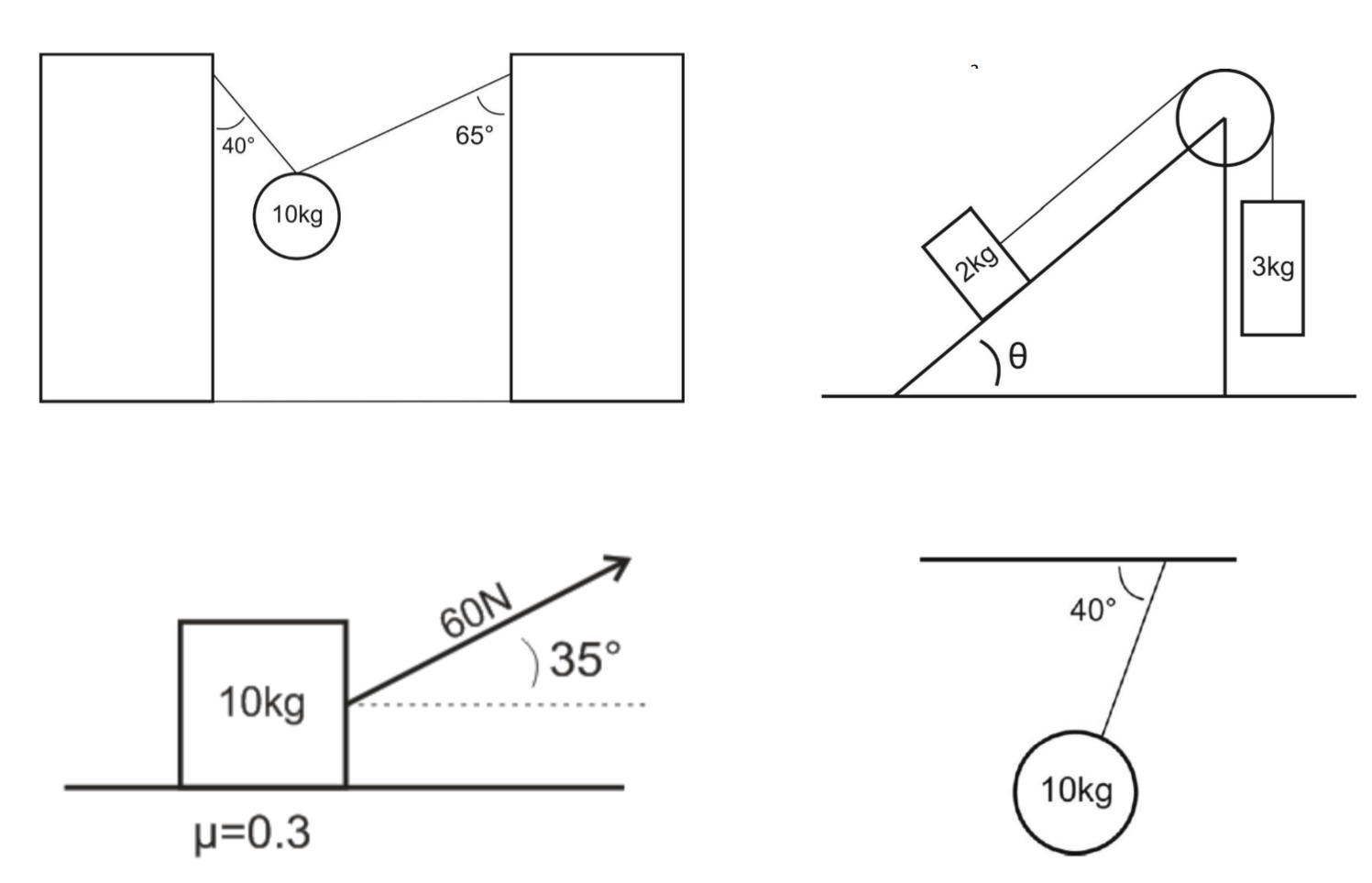 Class
32: Thursday,
12/7/23
Class
32: Thursday,
12/7/23Warm Up: In this next short unit, you will be finding all of the forces and accelerations in situations like those shown on the right. What general problem-solving strategy(ies) might be helpful?
Today:
- The test retake will be next Wednesday, instead of Monday (unless you object)
- Begin the
Unit 4 Handout (Forces in 2D)
PDF
Video from
2020
Answers and Solutions
- Practice problems p.1, 3, and #1 on p. 5
Homework:
- p. 2 and p.5 -- #2 P.2 Answers and Solutions P.5 solutions
- Project corrections are due by Monday, 12/11
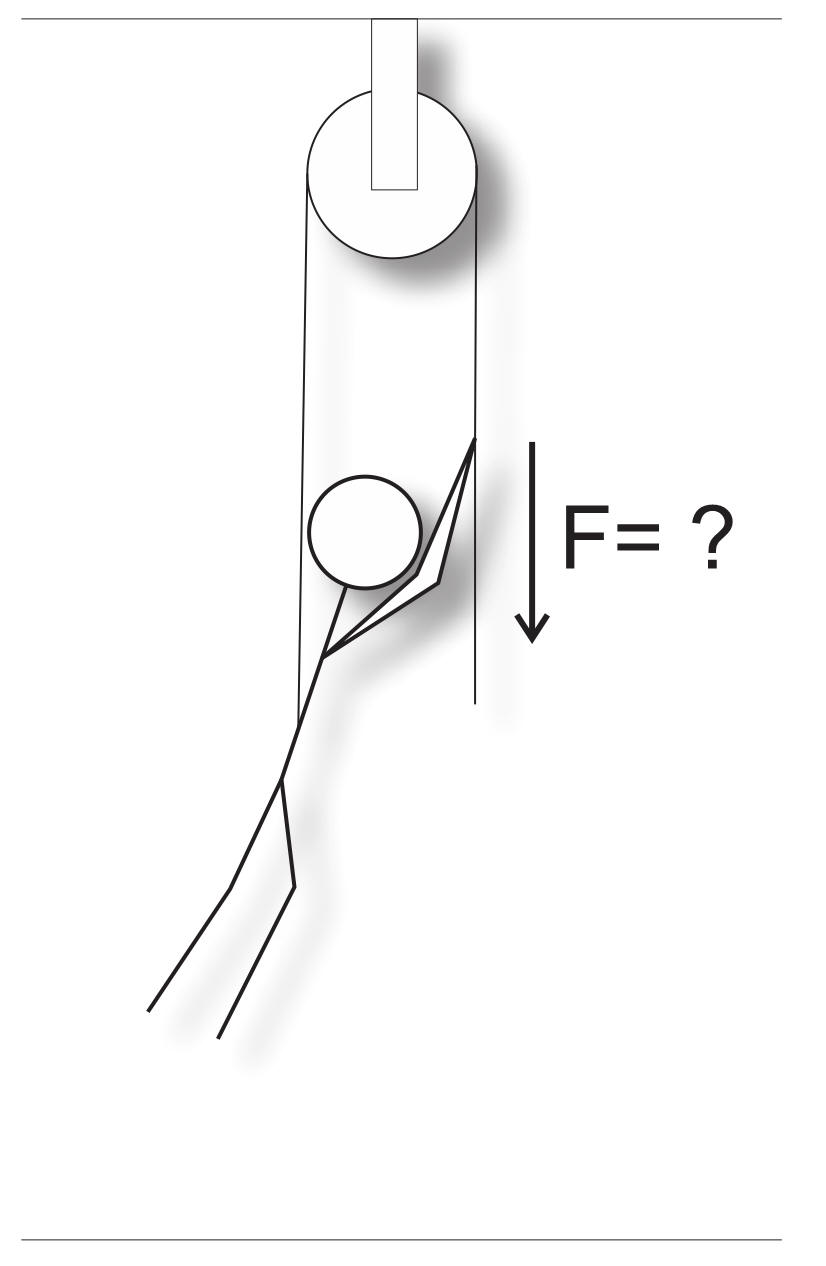 Class
31.5: Wednesday,
12/6/23
Class
31.5: Wednesday,
12/6/23Warm Up: One end of a rope is attached to the Gladys' belt. Gladys is pulling directly downward on the other end. Assuming that the pulley and rope are massless and fictionless, how much downward force must Gladys apply in order to ascend? Gladys weighs 500N.
Today:
Homework:
- Optional retake on Monday, 12/11
- Project corrections are due by Monday, 12/11
Warm Up: None
Today:
- Test
Homework:
- Optional retake on Monday, 12/11
- Project corrections are due by Monday, 12/11
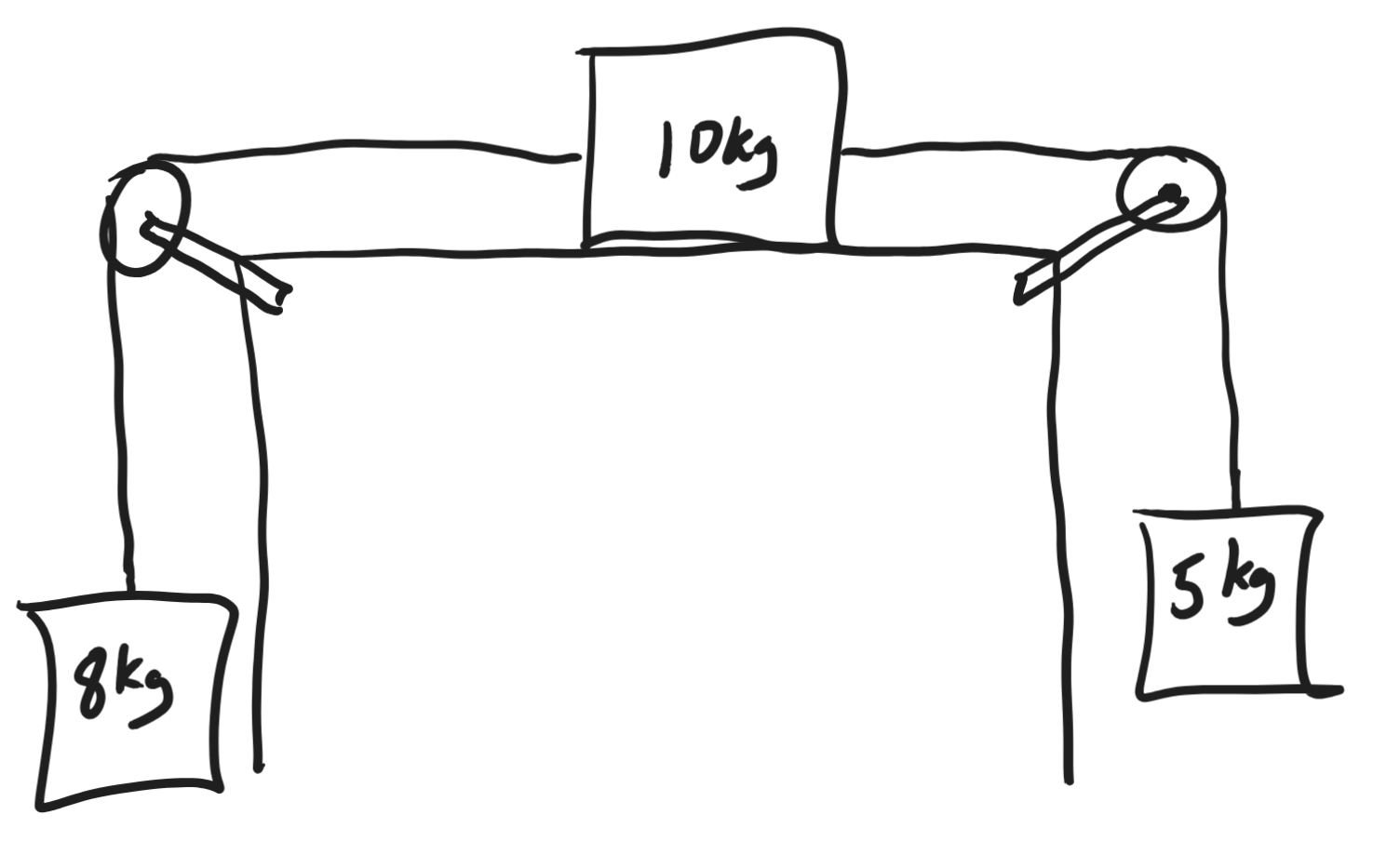 Class
30.5: Monday,
12/4/23
Class
30.5: Monday,
12/4/23Warm Up: If the coefficient of friction is zero...
1. Which blocks affect the net force acting on the entire system?
2. Which blocks affect the acceleration of the entire system?
3. To which blocks would you assign numerically negative values for acceleration (during your calculations). When? Explain?
Today:
- Return project grading sheets. I will grade any late projects that are submitted by tonight. Any project submitted after tonight will be graded with the projects that are submitted for corrections. Groups submitting late projects after tonight will not have an opportunity to make corrections after the first grading.
- Check/review homework
- Any last questions about the test?
- Start the new unit? Unit 4 Handout (Forces in 2D) PDF
Homework:
- Prepare for the test
- Optional retake on Monday, 12/11
- Project corrections are due by Monday, 12/11
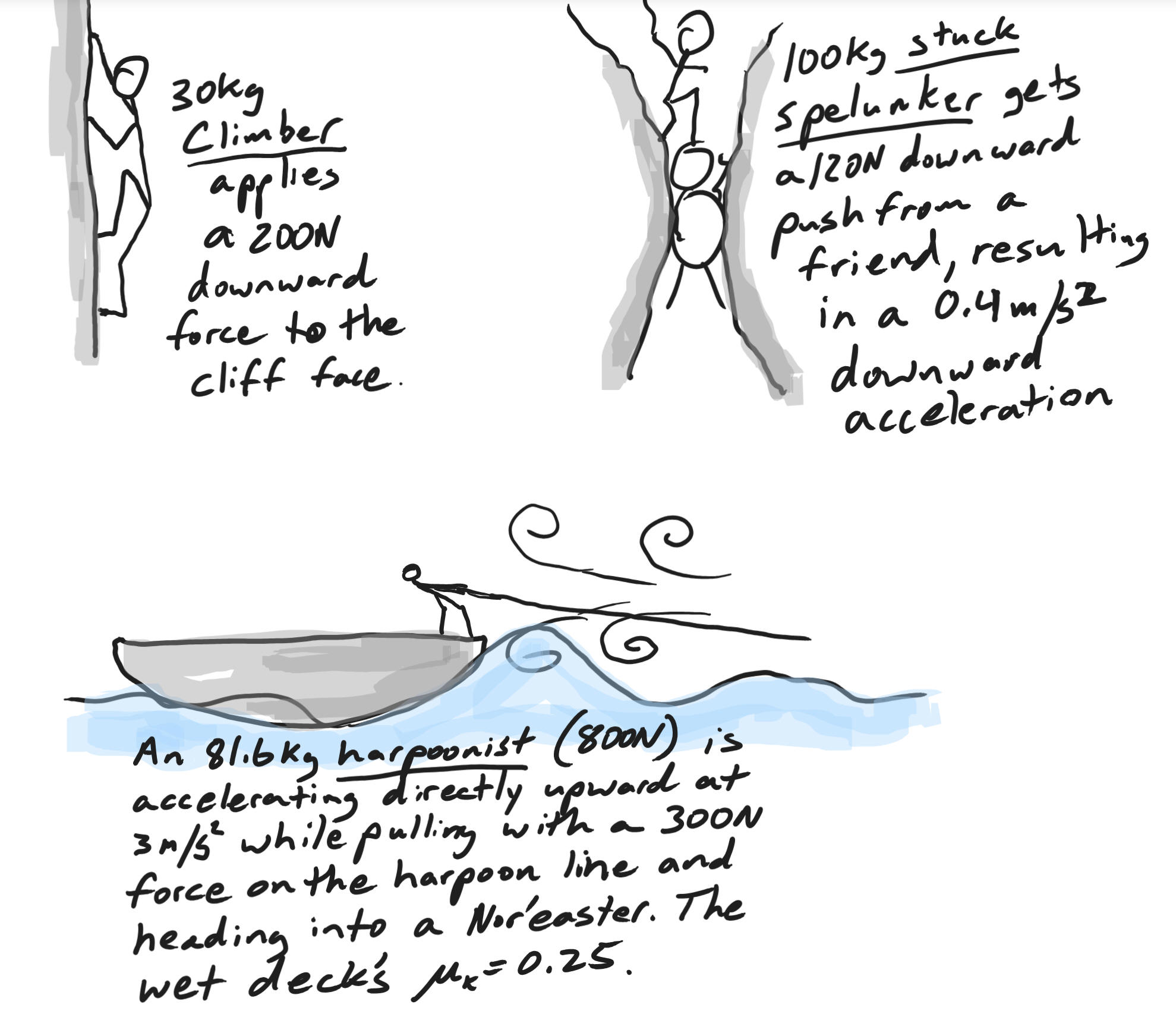 Class
30: Friday,
12/1/23
Class
30: Friday,
12/1/23Warm Up: Draw diagrams showing all of the individual and net forces acting on the underlined protagonists in the situations on the right.
Today:
- Turn in your project hard copies (or scan and turn them in by tomorrow tonight by 6:00PM -- I won't start grading before then)
- Check/review homework
- More review
- Tricks misconceptions:
- 3rd law (use the correct member of the pair),
- Constant velocity makes problems easy (and doesn't mean there are no forces),
- When there's no friction, the weight of a sliding object does not contribute to the net force
- When you feel like you don't have enough information, know that you really do: draw a force diagram, write the two equations for net force, and work to fill it all in.
- In multibody problems, don't use the wrong sign for acceleration when you're finding tension.
- On this test, if a velocity
is provided, there are only two situations in which it is
helpful --

- When to use kinematics equations -- acceleration is the link between the kinematics equations and the force equations.
- Tricks misconceptions:
- What would you like to work on?
Homework:
- Pages 17-20 -- except for #4 on p 18 (which was already assigned) Solutions
- Optional extra practice -- 2019-2020 Newton's Laws in 1-D test. answers/solutions
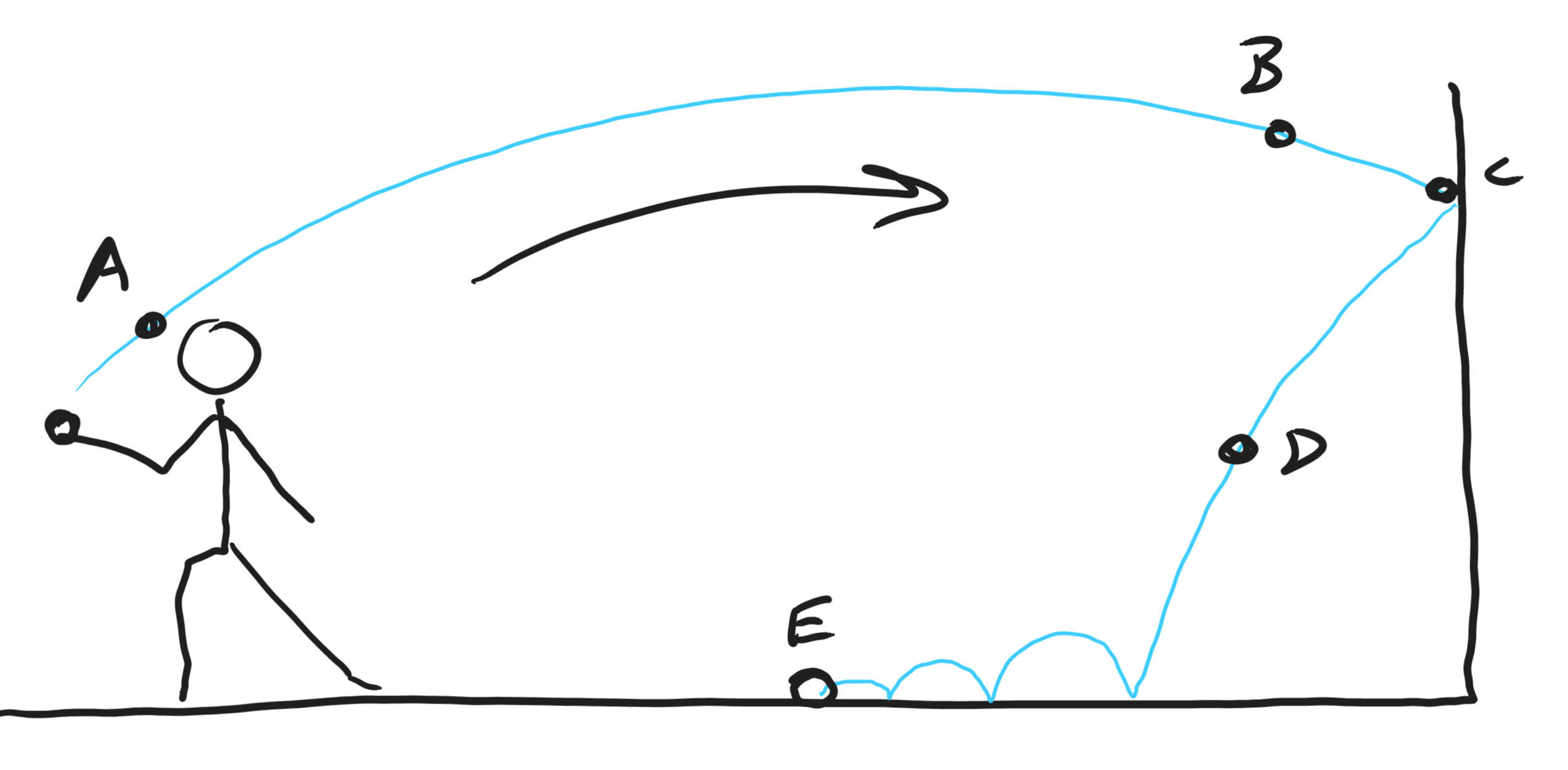 Class
29.5: Thursday,
11/30/23
Class
29.5: Thursday,
11/30/23Warm Up: At point C in the diagram on the right, the ball is in the process of bouncing off of the wall. The ball's mass is 0.15kg, and its current velocity is zero. At this moment, the ball is exerting a 2N rightward force against the wall.
1. Draw a diagram showing all of the individual forces, and the net force, acting on the ball at letter C.
2. Calculate the magnitude and direction of the ball's current acceleration.
3. Is this situation possible? Is it realistic?
Today:
- Approximate Test Format:
- 4 Short answer questions
- Draw a diagram showing, calculating, and naming all of the forces acting on an object in some scenario.
- 3rd Law example of action/reaction
- Interaction of drag, weight, and normal force as an object falls
- Create a series of diagrams showing and naming forces (with arrows indicating their relative strengths) acting on an object, based on a description of its motion
- 6 Problems (each with multiple parts)
- Weight
- Sliding object with/without friction -- horizontal motion
- Elevator Problems (vertical motion with tension)
- System of multiple masses with pulleys a tabletop, and friction (or maybe no friction)
- 4 Short answer questions
- Work on the practice test at the end of the Unit 3 Handout (but not page 22).
- Important Concepts:
- Problem-solving:
- Identify forces acting on an object. Weight is the only non-contact force. 3rd Law is a helpful trick.
- Write two equations for net force and set them equal (2nd Law and Vector Sum)
- Define "the system" -- and define direction (positive or negative) for the system
- Formulas:

- Other concepts:
- Friction
- Drag
- Problem-solving:
Homework:
- Practice Test -- Complete p. 21, 23, and 24 (not p.22) of the Unit 3 Handout (PDF)
-
If you don't finish the hard copy parts of your rocket project by Friday's class, scan them and turn them in with your spreadsheets in Google Classroom. Otherwise turn them in during class.
Warm Up: None
Today:
- Rocket project work time -- last class time
- Tomorrow, Friday, and Monday -- prepare for the test on Tuesday
Homework:
- Divide the project work among group memgers and work on some at home.
- The project is due on Friday. There will be class time to work on it today, tomorrow, and probably part of Wednesday.
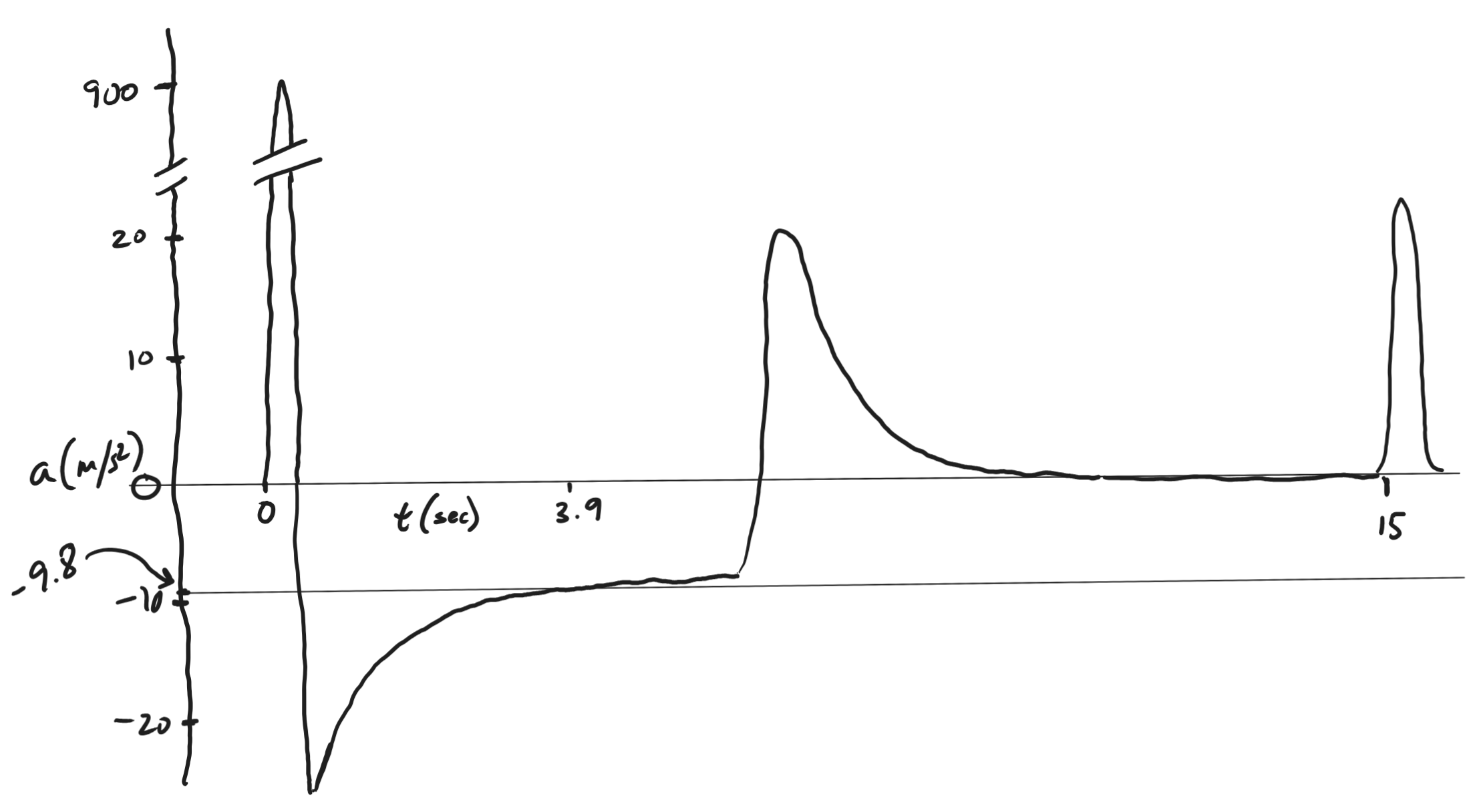 Class
28.5: Tuesday,
11/28/23
Class
28.5: Tuesday,
11/28/23Warm Up: An acceleration graph for a rocket launch with a parachute might look something like this.
1. Locate these moments in time ("snapshots" from the project).
a. sitting on the launch pad
b. Thrust phase
c. Beginning of coasting phase
d. Apogee
e. Moment during descent when net force is highest
f. Just before landing
g. Impact
2. How would this graph look different if there were no parachute?
Today:
- Clarification: After I grade and return your projects, you can make corrections and submit them again for a higher grade.
- Plan for the week:
- Today -- rocket project work time
- Wednesday -- rocket project work time
- Thursday, Friday, Monday -- get ready for the test
- Friday -- rocket project is due
- Tuesday -- Test over Newton's Laws in 1D
Homework:
- Divide the project work among group memgers and work on some at home.
- The project is due on Friday. There will be class time to work on it today, tomorrow, and probably part of Wednesday.
Warm Up: Get together with your group and make a copy of the "[your names]Water Rocket Flight Model" spreadsheet in Google Classroom. We're going to populate it together.
Today:
- Is there any disassembly left to do?
- Finish Water Rocket Analysis Part 1 (PDF)
- Work on Water Rocket Analysis Parts 2 and 3. Water Rocket Project Handout #2 (PDF)
- Note to self -- beware of the word "deserve."
- Here's the Vernier Video Analysis App link
Homework:
- Divide the project work among group memgers and work on some at home.
- The project is due on Friday. There will be class time to work on it today, tomorrow, and probably Wednesday.
- Tentative test day next Tuesday.



